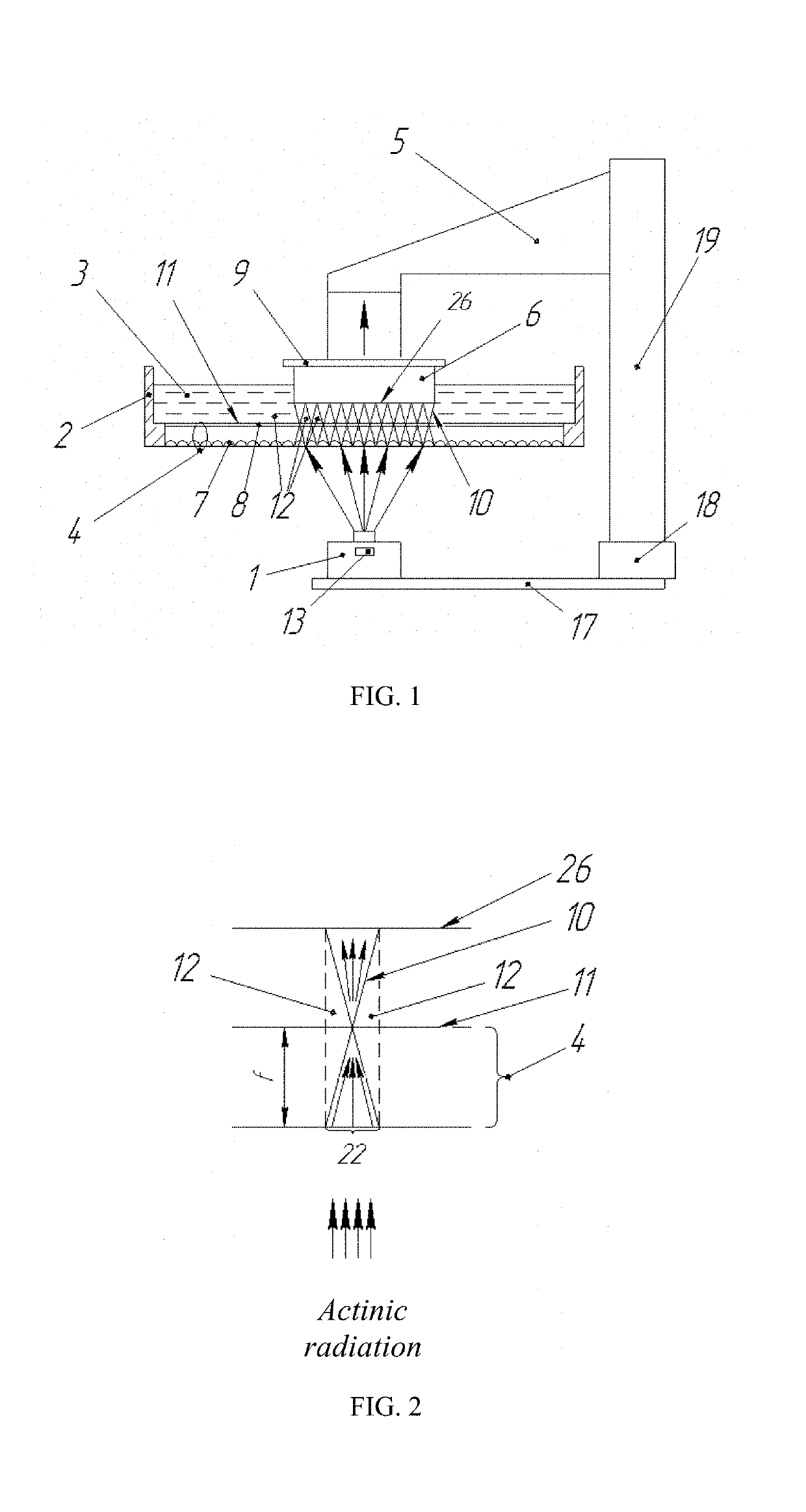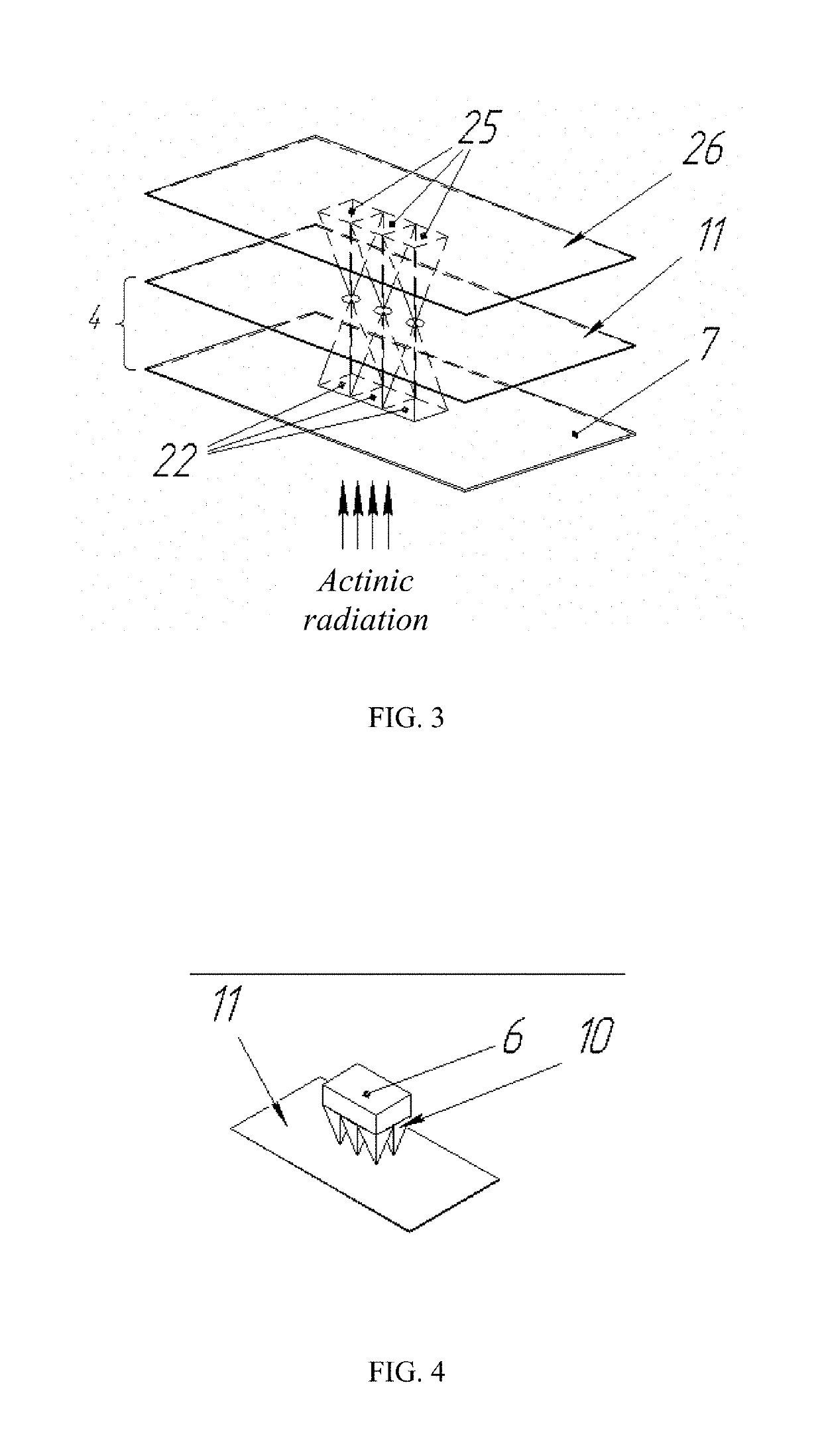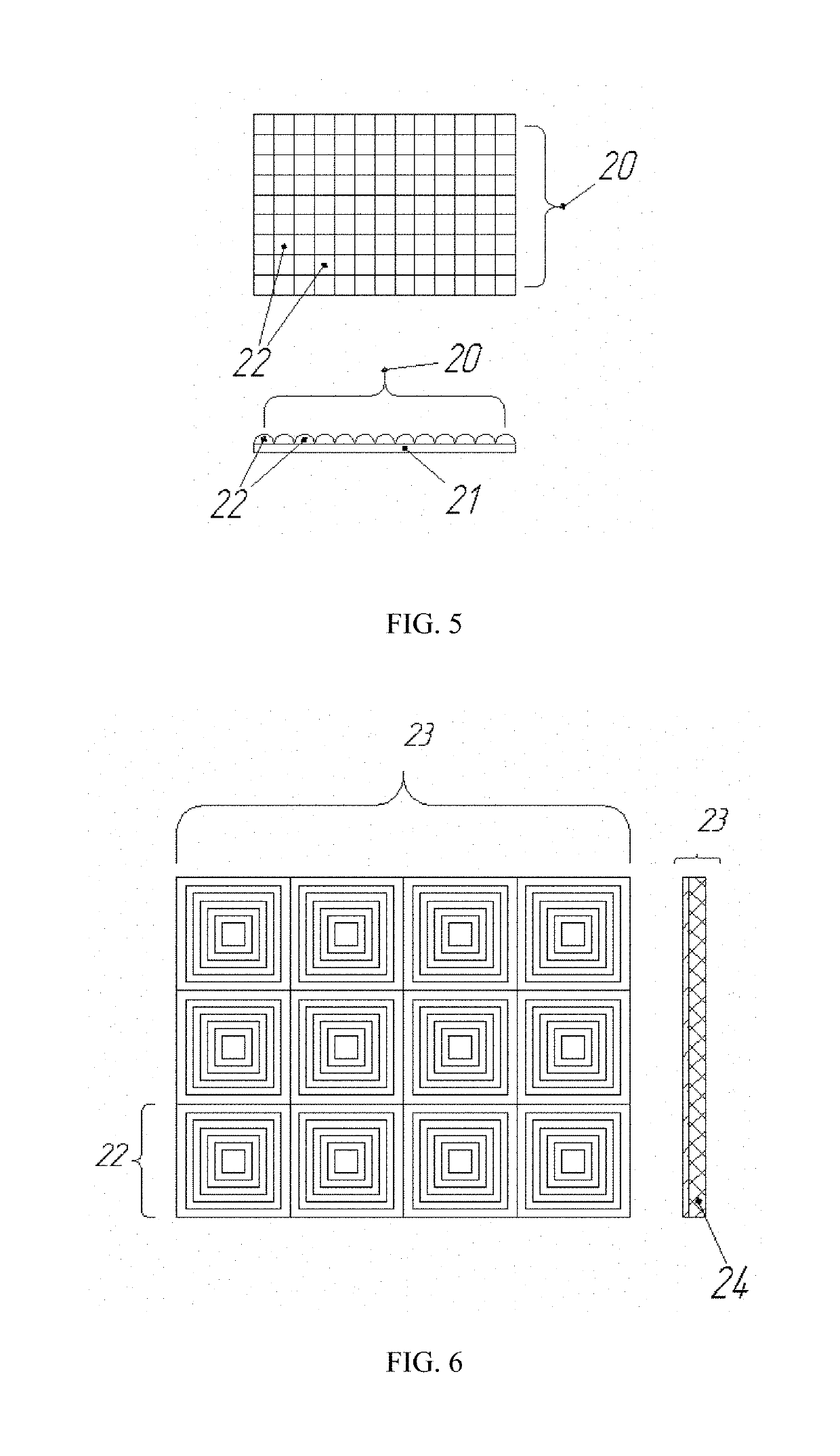Device and method for forming a three-dimensional object from a liquid polymer
a liquid polymer and three-dimensional object technology, applied in the direction of metal-working equipment, manufacturing tools, additive manufacturing, etc., can solve the problems of not providing a sufficiently high quality of built objects, method does not allow continuous exposure and movement of formed objects, and object building is rather slow
- Summary
- Abstract
- Description
- Claims
- Application Information
AI Technical Summary
Benefits of technology
Problems solved by technology
Method used
Image
Examples
example 1
[0209]Test object having a cruciform cross-section, twisted into a spiral at half-length, with a structural surface, 30×30×60 mm size, wall thickness of 1.2 mm (see. FIG. 20) made of transparent acrylic photopoyler from the company “Fun To Do”, Vossenkoog 2-4 1822BG Alkmaar, Netherlands
[0210]The optical interface design was used, which is a reservoir for a photopolymer made of polyethylene, the bottom of which is made in the form of a composite structure similar to that shown in FIG. 7, where: as the material of the element intended for contact with the photopolymer, a polypropylene film having a thickness of 20 μm was used. The wavefront converter was an array of hexagonal microlenses 80 μm in size with a focal length of 40 μm, based on a thickness of 300 μm, made of PMMA (FIG. 17). Molds for casting such lenses on standard equipment are available from the company “NIL Technology” Ar Diplomvej 381 DK-2800 Kongens Lyngby, Denmark.
[0211]The exposition was carried out by a multimedia ...
example 2
[0216]A test object having a square cross-section of 6×6×50 mm (see FIG. 21) made of acrylic photopolymer from the company “Fun To Do” Vossenkoog 2-4 1822BG Alkmaar, The Netherlands.
[0217]We used an optical interface design, which is a reservoir for a fluoropolymer photopolymer, whose bottom is made in the form of a composite structure (FIG. 7), where:[0218]as the material of the element intended for contact with the photopolymer, a polyethylene film with a thickness of 10 μm was used;[0219]as a wavefront converter, a thin hologram was used on a 30 μm film carrier, representing an array of hologram lenses of square shape with dimensions of an elementary microlens of 25×25 μm and a focal length of 30 μm (see FIG. 18), such holograms are manufactured by Holoptica 425 Old Country Road, Suite A & B, Belmont CA 94002, USA;[0220]As a cooling unit of the optical interface, a flat reservoir 4 mm thick was used, filled with a coolant, which used water, the coolant circulation was not carried...
example 3
[0227]A test object having a cross-section of 10×10×80 mm in dimensions with a wall thickness of 0.8 mm, with a smooth surface (see FIG. 22) made from a photopolymer containing a white pigment, from the company “Fun To Do” Vossenkoog 2-4 1822BG Alkmaar, The Netherlands.
[0228]We used an optical interface design, which is a reservoir for a fluoropolymer photopolymer, whose bottom is made in the form of a composite structure (FIG. 7), where:[0229]as a material of the element intended for contact with the photopolymer, a film of oriented polyethylene with a thickness of 8 μm was used;[0230]a hologram of the type of cineforms on a 30 μm film carrier was used as the wave front converter, which is a array of hexagonal holograms of a Fresnel hologram with dimensions of an elementary microlens of 35 μm and a focal length of 40 μm (see FIG. 19), such holograms are manufactured by Holoptica “425 Old Country Road, Suite A & B, Belmont Calif. 94002, USA;[0231]as a cooling unit of the optical int...
PUM
| Property | Measurement | Unit |
|---|---|---|
| speed | aaaaa | aaaaa |
| sizes | aaaaa | aaaaa |
| sizes | aaaaa | aaaaa |
Abstract
Description
Claims
Application Information
 Login to View More
Login to View More - R&D
- Intellectual Property
- Life Sciences
- Materials
- Tech Scout
- Unparalleled Data Quality
- Higher Quality Content
- 60% Fewer Hallucinations
Browse by: Latest US Patents, China's latest patents, Technical Efficacy Thesaurus, Application Domain, Technology Topic, Popular Technical Reports.
© 2025 PatSnap. All rights reserved.Legal|Privacy policy|Modern Slavery Act Transparency Statement|Sitemap|About US| Contact US: help@patsnap.com



